Innovation 101
- fxcorrelator
- Sep 19, 2019
- 3 min read
ok for my first post here lets take a real fast run through some of the basics in this vital subject :-
"Innovation is turning an idea into a solution that creates
value to a customer"
Idea into a Solution: Having an idea is only the first step.
You actually need to execute on the idea in order for it
to achieve anything
Value to a Customer: This means that the ultimate goal
of any innovation effort always needs to focus on
improving the customer’s experience. And this means
that the solution you have produced is addressing an
actual problem or challenge which they had, not just one
you imagine they’ve had. And the way that you provide
it to the customer is how the customer can determine if
it is valuable to them (which includes everything from
quality, price, ease of use, availability etc).
Essentially, you need to provide a solution which your
customers perceive as having value to them, compared to all
of the other options available to them.

Desirability is whether or not your customers perceive
the value in it
Viability is whether it meets company aims, which
should include contributions toward profit, values and
strategy
Feasibility is whether or not it is possible to produce the
offering with current technology / resources, or what
capabilities need to be developed to make it viable
INNOVATION PROCESS - Teamwork , Technique and Tools
1.Methodology: Standard programme management
lifecycles can actually harm a team’s ability to execute
innovations. But an Innovation Lifecycle methodology
will guide your team members through the process of
developing an innovation, while also reporting progress
to leadership
2. Focus on Problem and solution: Every action your team
takes should consider whether it is actually addressing
the challenge for the customer and enhancing the
solution from their perspective.
3. Experimentation & Prototyping: Fail early. Fail cheaply,
Fail often. Experimentation on your offering should
begin early to help rapidly refine it, by finding data and
reasons for what actually improves the solution
(Gregersen, 2011).
4. Feedback incorporation: Asking customers if they “like”
or are “satisfied” with the solution is getting feedback far
too late. Getting feedback from trusted sources before
the product is launched provides you insights into what
the customer finds valuable and avoids wasted effort.
5. Diversity in Team: The team you put together need to
complement each other’s skills. This means not only
having a mix of dreamers & doers, but different
backgrounds, and mixing teams between projects to
keep ideas flowing (Uzzi, 2005).
6. Evaluation: Not all ideas are going to be good, but even
the good ones need to be prioritised to make sure
resources and time are being used most effectively. This
is why determining the evaluation criteria for what
innovation success looks like at the beginning is vital.
7. Work Environment: The location and design of the work
environment can have huge effects on how innovative
the people working there can be. Everything from how
distracting it is (Konnikova, 2014) to how it affects the
brain’s ability to generate ideas (MEYERS-LEVY, 2007)
needs to be considered.
8. Resources: Do your team members have the equipment,
technology, facilities, budget and corporate support they
need to develop, design, experiment and refine the
innovations?
9. Tools: In addition to the resources above, do the team
members also have the tools and skills to make sure they
are progressing, such as knowledge on how to collect the
right information or templates to plan ahead.
10. Time available: Not all innovations start as corporate
strategies or come from ideation sessions. Some
companies enable their staff to use some work time to
develop ideas they think would be useful to the
company, like 3M allowing staff to spend 15% of their
worktime on their own ideas.
11. Cross-Pollination: Often, solutions to difficult
challenges come from unexpected sources, such as
someone from outside the team providing insight into
how an equivalent challenge was solved by another
team, company or industry. Cross-pollinating ideas
between teams, either through insight days or swapping
team members can bring valuable new perspectives.
12. Brainstorming Effectively: Traditional brainstorming
sessions are actually terrible at producing actionable
ideas. A lot of time is used that often doesn’t deliver
anything for the company. But when run effectively,
these ideation sessions can produce huge numbers or
refined ideas which actually address the challenge and
meet the evaluation criteria.
13. Message and buy-in: Innovations will never get off the
ground if they aren’t supported by a relevant leader in
the organisation. Getting the message of what the
project aims to achieve right will facilitate getting buy-in
for it right at the beginning stages.
Types of innovation
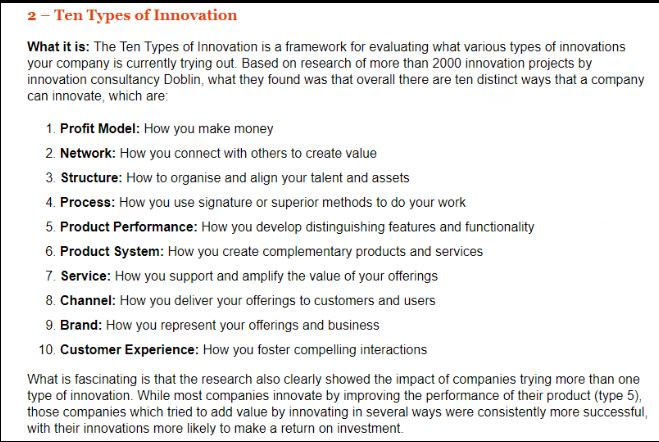
MORE EXAMPLES
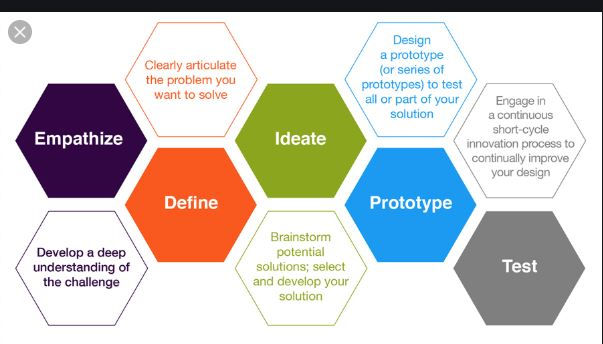
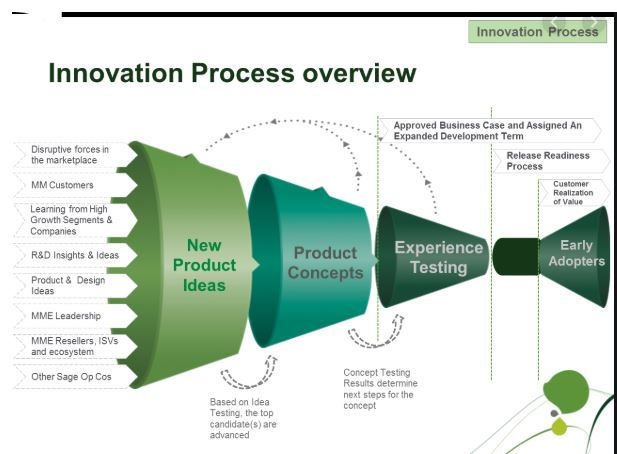

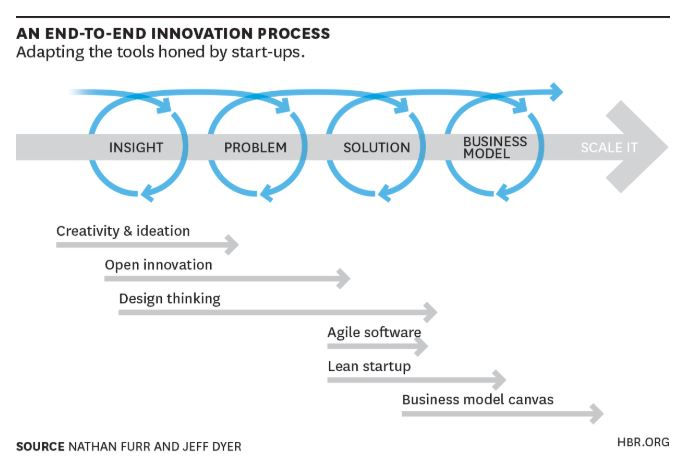
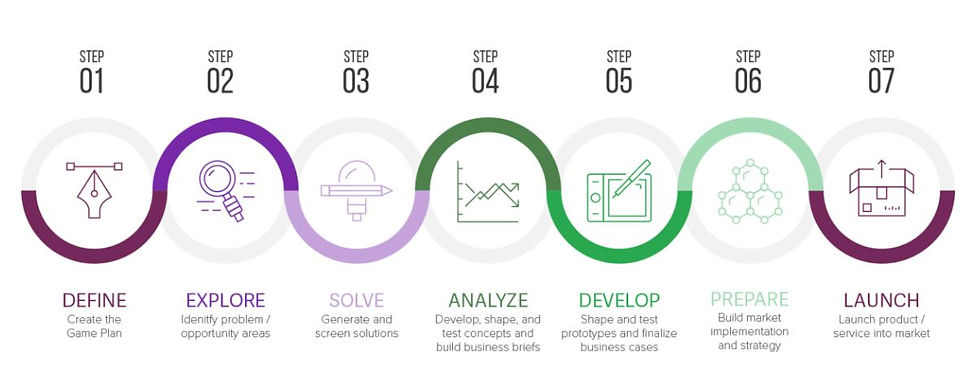

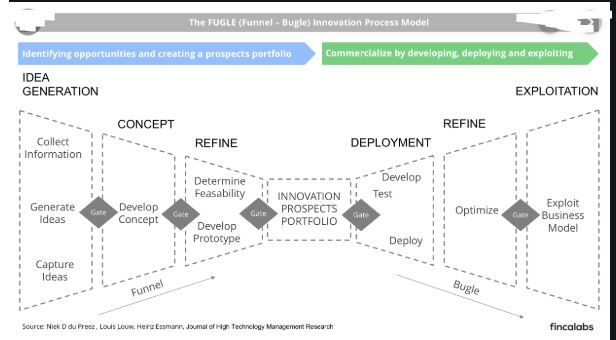
in later articles we will examine the detail and challenges in these areas, but at least a framework has been established
Neil





Comments